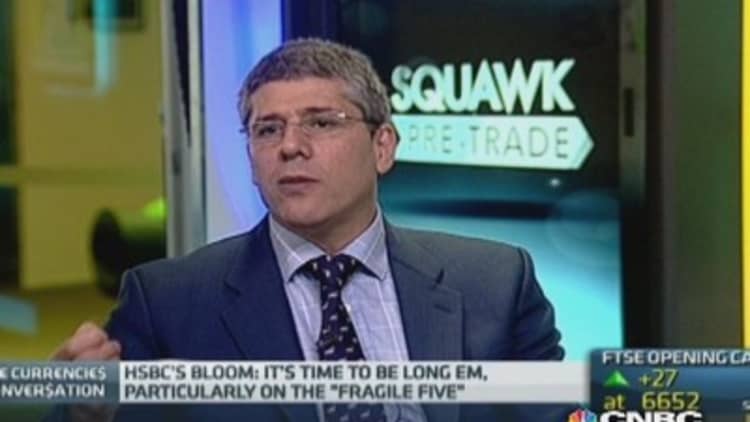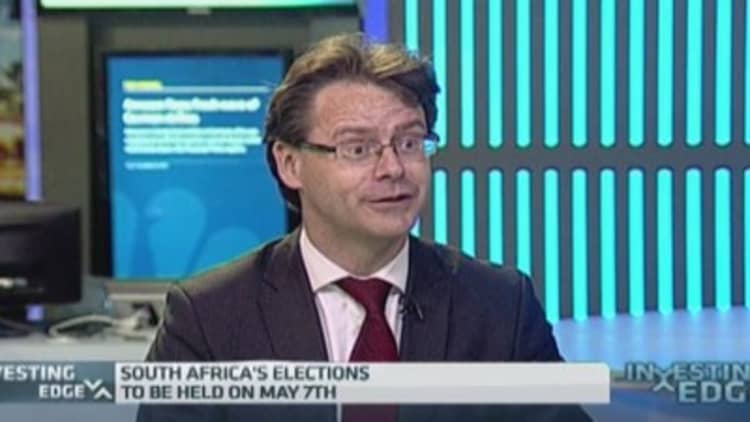
The strong performance of the "fragile five" currencies has marked a return to favor for the so-called carry trade, so much so that currency traders have rebranded the group the "high five."
The five currencies—the Brazilian real, , Turkish lira, Indonesian rupiah, and South African rand—are among the top-performing currencies since the end of February and are the best way to play lower volatility in currency markets this year, analysts have said.
"What is the answer in FX to low volatility—buy carry, and that is what we have been suggesting since February. Buy the fabulous five or the high five—these aren't the fragile five anymore," said David Bloom, HSBC global head of FX.
The carry trade, the strategy of borrowing in low yielding currencies to buy assets that yield a higher rate, was shunned last year as volatility in emerging market currencies spiked over fears of the winding down of U.S. stimulus.
Read MoreAussie dollar resilience: Here today, gone tomorrow?
But Federal Reserve chair Janet Yellen's reassurance that the U.S. central bank's unprecedented bond-buying program would be needed for "some time" has supported EM currency and encouraged investors to take on more risk.
Big swings in foreign exchange rates can make carry trades very risky, but the current low volatility is near record lows for developed market currencies, supporting the carry trade and EM currencies, said Bloom.
Interest rate volatility and demand for protection against extreme moves in the dollar have dropped significantly, with the JP Morgan FX volatility index at it lowest levels since 2007.
Read MoreGold the answer to surviving EM currency sell-offs?
"What you do is you pick up these currencies in Brazil, India, Turkey, Indonesia and South Africa and you just sit there, and if there no volatility, you just take that yield on. In a low volatility environment, there is an answer in terms of trading and that is to buy the fabulous or high five," Bloom told CNBC.

Current account deficits in EM countries, a key concern for investors, have "melted away" in recent months, according to Benoit Anne, head of EM strategy at Societe Generale.
"Forget about the fragile five. It is about time we moved on," Anne said in a research note. He has renamed the group the "solid five."
Last year's investor obsession with current account deficits was misguided, Anne said, and since then the current account deficit for the five-country group has made a "remarkable adjustment."
Read MoreBurberry still a hit in Asia, currency headwinds loom
"It now stands at some 4.2 percent of GDP (as of Q4-2013), against 6.2 percent six months earlier," he said, advising investors to be long the currencies.
"Given the sharp recovery in risk appetite, we would argue that those currencies that were targeted by aggressive speculative attacks last year now present a buying opportunity," he said.
Deutsche Bank currency strategists noted the Indonesian rupiah has been the best-performing currency of the year despite the being among the "fragile five," but they added a warning that carry traders needed to be selective.
"Recent hikes in interest rates by EM central banks have taken carry to attractive levels. However, any carry longs will need to be selective, with local growth and competitiveness stories and sensitivities to Fed tightening still very heterogeneous," said Oliver Harvey, FX and macroeconomic strategist.
—By CNBC's Jenny Cosgrave.


